Safety on Regional Roads
Road safety treatments are critical for improving road safety and reducing the risk and severity of crashes in regional locations.
Infrastructure safety treatments can provide a safety benefit for all road users. In regional South Australia, hitting a fixed object is the most common crash type. Roadside barriers are used with shoulder sealing and hazard removal. This reduces the likelihood and severity of these crash types.
Some hazards cannot be removed, such as environmentally significant trees or bodies of water. In these situations, installing roadside barriers can reduce the severity of crashes.
The Department for Infrastructure and Transport has developed a regional Network Safety Plan. The plan assesses the road safety risk across the sealed rural road network under its care, control and management. The plan examines the cost-effectiveness of road safety interventions to reduce safety risks. An investment plan guides the budgeting and implementation of appropriate road safety treatments to lower safety risks of the regional road network. This prioritises available funding to maximise road safety outcomes.
Infrastructure engineering solutions to increase the safety on regional roads include:
- wire rope safety barrier
- shoulder sealing
- W-Beam guard fence
- motorcycle rub rail
- wide centreline treatments
- audio tactile line marking
- duplication
- overtaking lanes.
Under the plan, the Australian National Risk Assessment Model (ANRAM) provides a system to:
- determine road safety risk ratings on the Department's regional roads
- identify road sections with the highest potential risk of severe crashes
- inform investment planning.
Risk ratings act as a metric for assessing the level of road safety. They are important for communicating the safety context of the road network to users.
Wire Rope Safety Barrier
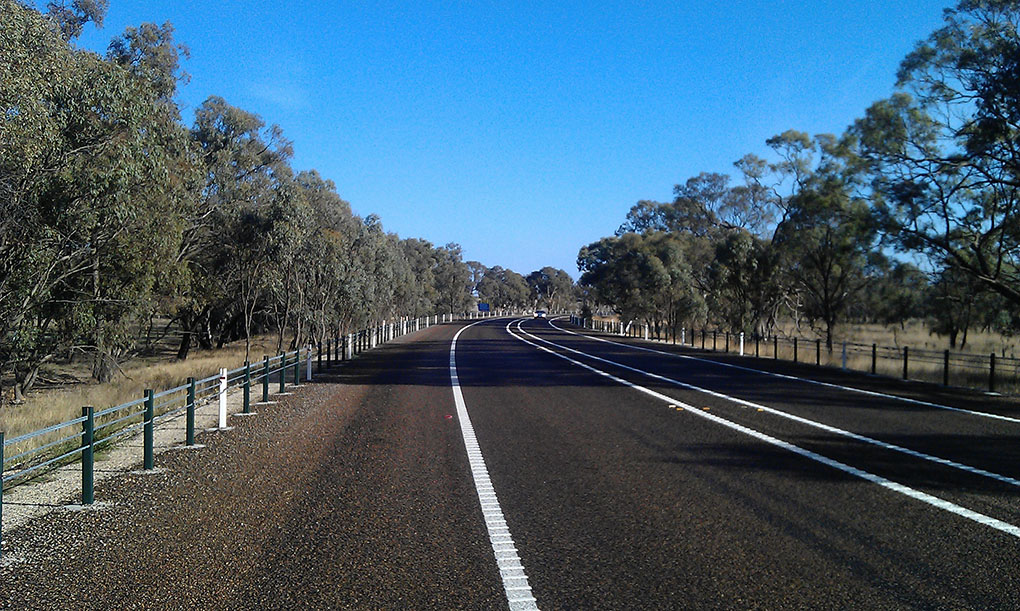
Wire Rope Safety Barrier on the roadside of the Dukes Highway
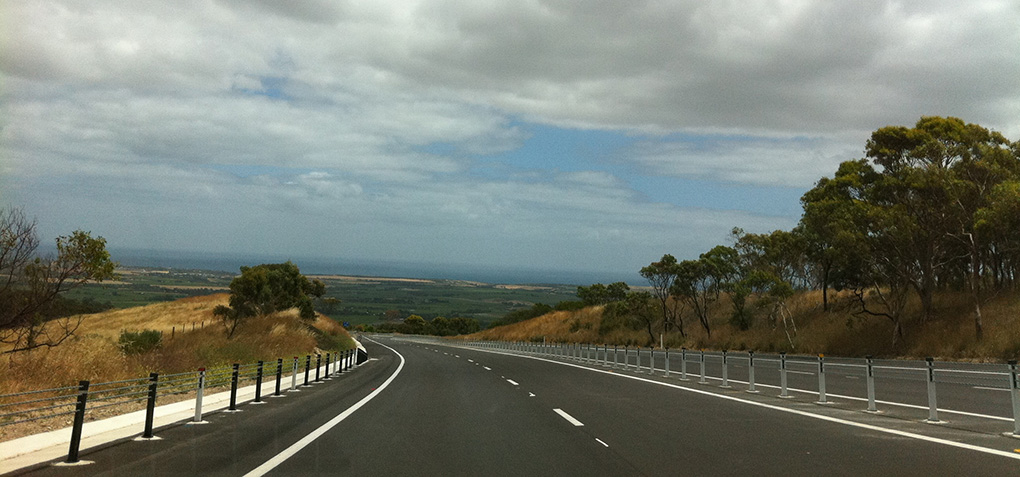
Wire Rope Safety Barrier in the median on Victor Harbor Road
Wire Rope Safety Barriers (WRSB) are designed to absorb crash energy with the aim of reducing crash severity. They are effective for absorbing energy of a collision and reducing the injury severity for car occupants. WRSB can be installed in the median to prevent head-on crashes, or on the roadside to protect road users from roadside hazards.
Shoulder sealing
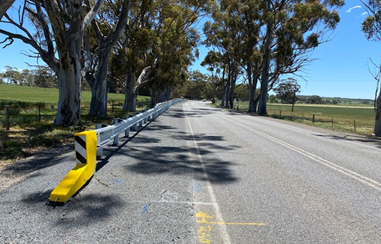 Shoulder sealing treatment
Shoulder sealing treatment
Shoulder sealing improves the safety of regional roads by providing a width of seal beyond the edge line. It allows drivers greater opportunity to recover safely if they drift from the travel lane. A common cause of head on and run off-road crashes on regional roads is running off the sealed pavement on to the unsealed shoulder, then over-correcting steering to the right or braking too hard.
Shoulder sealing at regional Black Spot sites has demonstrated a 65% reduction in crashes. Across the network more generally, shoulder sealing has been shown to reduce crashes by 40%.
W-Beam Guard Fence
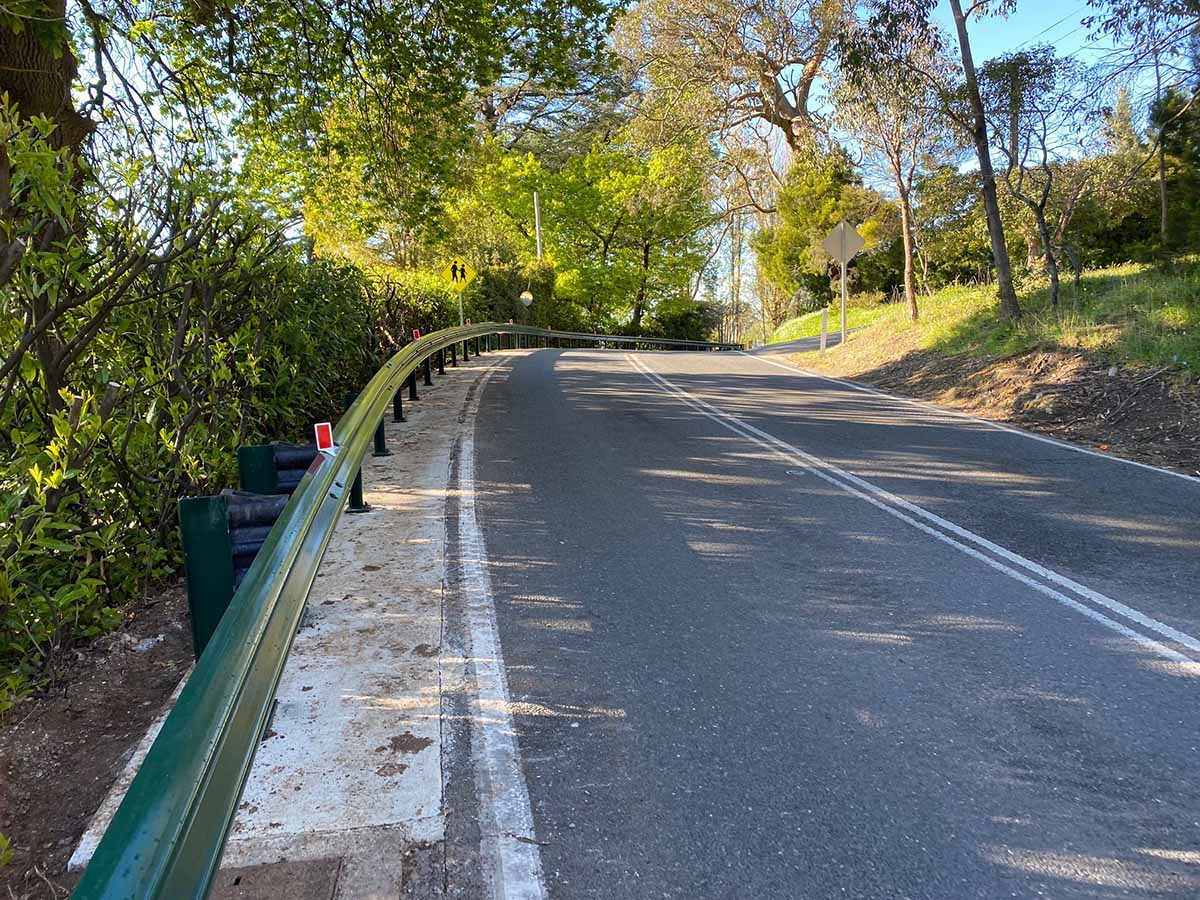
W-Beam Guard Fence on Mount Lofty Summit Road
A guard fence is designed to reduce crash severity by absorbing the energy of the crash, like a Wire Rope Safety Barrier (WRSB). W-Beam Guard Fence has less deflection than WRSB and can be installed on roads where the hazards are closer to the travelling lane. As such, it is often installed on winding roads where roadside hazards are near the edge of the road.
Motorcycle Rub Rail
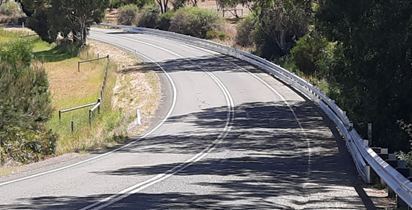
Motorcycle rub rail
Traditional guard fence can pose a safety hazard to motorcycle riders and their passengers. Support posts concentrate the forces of a crash, which has the potential to lead to serious injury. Motorcyclists are vulnerable to collisions on bends and curves, where the stability of the motorcycle is at stake. Motorcyclist safety is improved by using motorcycle protection at high-risk locations on popular motorcycle routes, such as in the Adelaide Hills. The motorcycle rub rail treatment is designed to absorb energy during impact and deflect a rider away from the impact point.
Wide Centreline Treatments
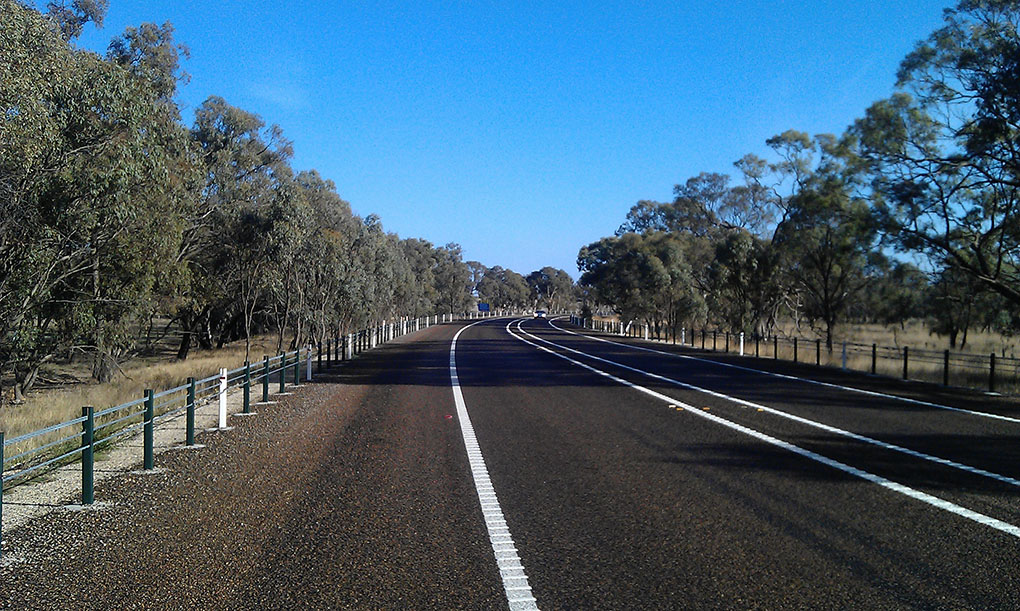
Wide Centreline Treatment on the Dukes Highway
Wide Centreline Treatments comprise two parallel painted lines which separate oncoming traffic more than standard line marking. The width between the lines is typically 1 m. It increases the separation of vehicles with little effect on travel speeds. Where geometric constraints do not allow for the 1-metre width, narrower wide centreline treatments can still provide benefit and be managed on a risk basis. They are used on high-volume, high-speed rural roads. By increasing the separation between traffic flows and allowing extra recovery room, they reduce the risk of crashes of all types, particularly head-on crashes.
Wide Centreline Treatments are considered Safe Systems supporting treatments. They create the space for a primary treatment, median wire rope safety barriers, to be installed in the future.
Audio Tactile Line Marking
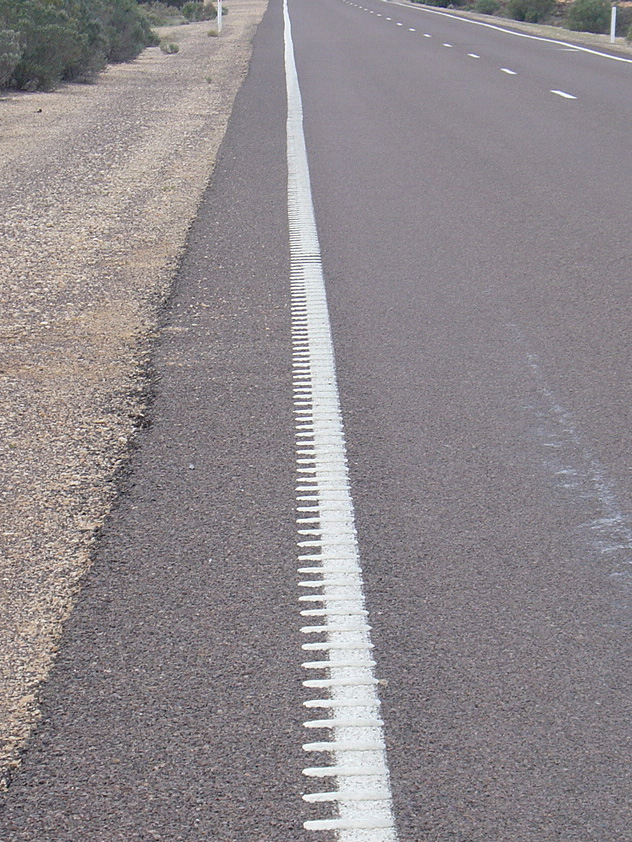
ATLM on the edge line of a regional road
Audio Tactile Line Marking (ATLM) is used on regional roads in conjunction with shoulder sealing to reduce the incidence of run-off road and head on crashes.
ATLM consists of raised thermoplastic projections which are installed beside or on top of the centre or edge lines. ATLM improves the safety of a road by providing a noise (audio) and vibratory (tactile) warning to road users who may drift from their lane due to inattention, fatigue or poor visibility.
ATLM is very effective in reducing the risk of crashes and has resulted in a 30% reduction in drivers running off-road.

